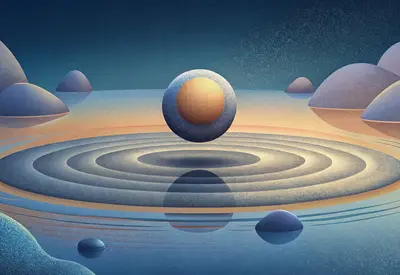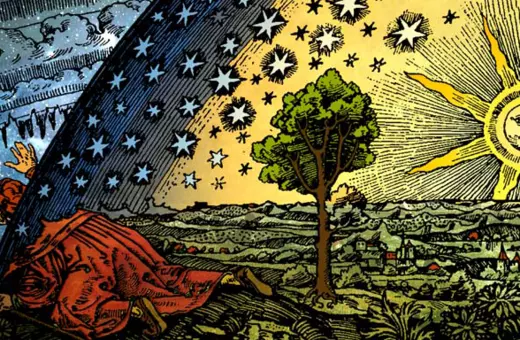We once thought philosophy could step beyond the limits of human perspective, describing the world as it exists in itself. Waves and Stones takes up that challenge, arguing that all things, from people to planets, exist on equal metaphysical footing. Philosopher Michael Kuznets argues that this attempt still ends up reaffirming the very human standpoint it seeks to escape. Even the boldest metaphysical systems remain trapped by our ways of seeing and valuing the world. This follows on from last week’s article “On the Ultimate Nature of Reality,” where Harman laid out his vision of reality as composed of objects rather than processes. Here Kuznets shows how that vision still bears the imprint of human experience.
When I was at university, a lecturer told the class that a philosopher should be interested in everything, since philosophy touches on everything. Graham Harman would surely agree, writing that “where certain topics arise again and again in every place we look, we seem to be dealing with a basic feature of reality. These are the moments when philosophy…is called to the scene.” His latest work Waves and Stones: On the Ultimate Nature of Reality (this is his thirteenth published book in a decade), examines the clash between the continuous and the discrete via a sight-seeing tour of all the places Harman finds this basic feature of reality. We see the rise of the Mongolian Empire through the historical theory of fourteenth-century scholar Ibn Khaldun, a dispute over simultaneity between philosopher Henri Bergson and Albert Einstein, Aristotle’s inadvertent innovation of metaphysics, and a bitter fight in the world of evolutionary science. Is this a scattergun tactic, presenting a bewildering array of examples in an unnecessary amount of depth, in order to bamboozle the reader into giving the rather thin philosophical claims of the author a rather kinder hearing than they deserve? Or is Harman carefully weaving his case that the interface of the continuous and the discrete is a fundamental feature of reality that any ontological schema must reckon with?
___
By grounding the reality of things in qualities accessible only to human senses, Harman’s supposedly non-anthropocentric ontology collapses back into the very human perspective it claims to transcend.
___
Waves and Stones expands on 2018’s Object-Oriented Ontology: A New Theory of Everything. Object-Oriented Ontology (OOO) arose out of Harman’s frustration with what he viewed as the anthropocentrism in Heidegger’s ontology (and in the ontological projects of fellow philosophers in the continental tradition). By anthropocentrism, Harman is not merely concerned by the privileging of human perspectives over those of other animals. He argues that continental philosophy has neglected object-object interactions. By this, Harman means the ways in which nonhuman things affect, respond to, and encounter one another independently of human perception. OOO is aimed at, amongst other things, redressing that balance. Critics of OOO have often questioned whether the very notion of “objects” can bear the metaphysical weight Harman gives them. In Waves and Stones, Harman responds by grounding the reality of objects in their discrete and continuous features; but in doing so, he exposes the tension at the heart of his project: any ontology that rejects the human viewpoint must still rely on the way things appear to us to make its case.
 SUGGESTED READING
On the ultimate nature of reality
By Graham Harman
SUGGESTED READING
On the ultimate nature of reality
By Graham Harman





















Join the conversation